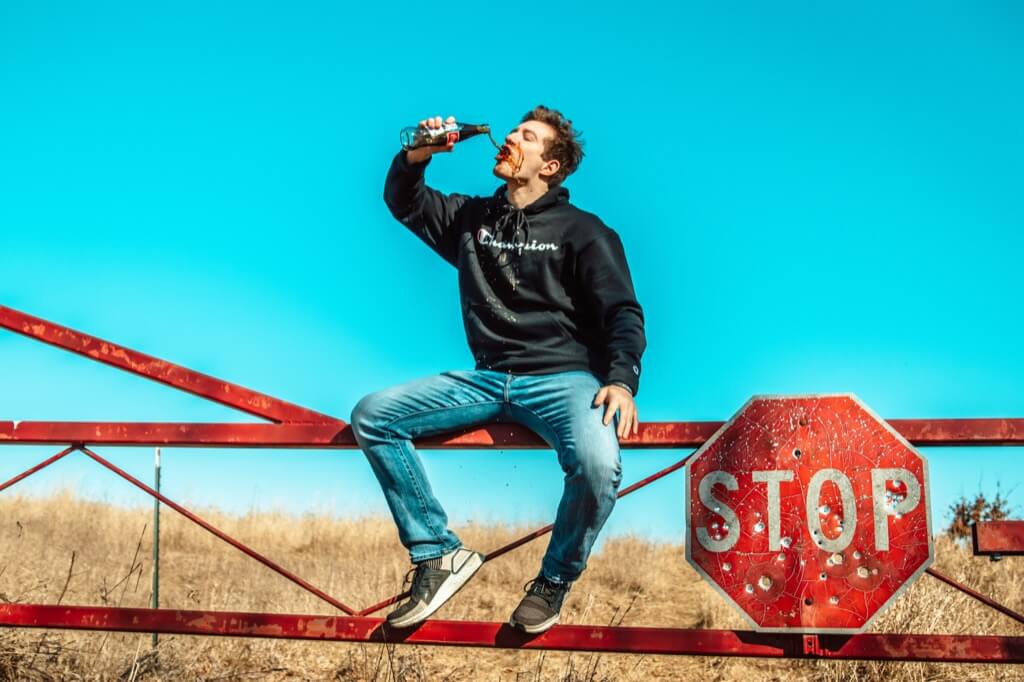It’s a widely held belief that tapping a freshly shaken soda can significantly reduce the inevitable explosion of sugary fizz. But does this common practice have any effect? Africa Nova delved into the science behind this fizzy phenomenon and conducted its own meticulous experiment to uncover the truth.
To begin with, we scoured various sources but found no concrete answer, prompting us to take matters into our own hands.
Some reputable voices, including the fact-checking website Snopes, have weighed in on the matter, yet their experiments remain inconclusive. Our skepticism stemmed from the lack of standardized procedures and limited data, leaving us hesitant to declare tapping as a definite solution.
While some sources argue that tapping the can can help, others, like Cornell University biochemist Karl J. Siebert, suggest that it might exacerbate the issue by creating more bubbles.
So, what’s the science behind this soda conundrum? When a can is vigorously shaken, the dissolved carbon dioxide forms bubbles on the inner surface, and it’s speculated that tapping dislodges these bubbles, allowing the gas to escape without spilling the liquid upon opening.
In pursuit of answers, we designed the “Shakenator T-3000,” ensuring consistency in our shaking experiments. Our observations included variations in temperature, vibrations, and run time, recognizing their influence on foam production.
Our comprehensive experiment involved measuring the liquid output when cans were shaken and tapped in different ways, as well as opening cans at intervals to gauge the release of foam.
The startling discovery? Tapping the can did not affect the foam output. The time lapse between shaking and opening, however, significantly impacted the foam production. We found that even a few seconds of delay in opening the can lead to substantial variations in foam output.
Our results suggested that changes in the speed of opening containers influenced foam production, revealing the delicate dynamics of gas release and container type.
Contrary to popular belief, vigorous tapping didn’t minimize fizz; if anything, it contributed to more foam. Despite claims that tapping 30 or 50 times might work, our experiments proved otherwise.
While plastic bottles took longer to open, they produced more foam, possibly due to the presence of more nucleation sites. We hypothesized that Coca-Cola maintains uniform carbonation levels across containers to ensure consistent taste.
Surprisingly, our findings indicated that waiting for more than a minute wasn’t necessary for the soda to stabilize, even when the can was opened swiftly.
Fizz Fun Fact: Dr. Pepper vs. Coca-Cola Foam Face-Off
Did you know Dr. Pepper generates about half as much foam as Coca-Cola? Factors like aspartame and carbon dioxide levels play a significant role, making Dr. Pepper a less fizzy contender.
Unveiling the Foam Expert’s Secrets
Ever heard of a “foam expert”? Well, Professor Siebert is one, specializing in the science of foam and fizz in beverages. His deep insights into the sensory experience of drinking are truly fascinating.
The CO2 Pressure Inside Your Favorite Soda Can
Carbonation in sodas involves the introduction of pressurized carbon dioxide. Understanding the pressure dynamics inside the can shed light on the science behind that effervescent taste and mouthfeel.
Carbon Dioxide’s Role in Your Soda’s Flavor
Wondering why carbon dioxide is added to soft drinks? It’s all about the carbonic acid it forms, balancing out the sweetness and altering the taste experience. Learn how your taste buds react to this fizzy transformation.
Tips for Managing Fizzy Soda Explosions
Understanding Foam Dynamics in Different Sodas
Get to know the variations in foam production between different soda brands. Factors like ingredients and carbon dioxide levels influence the fizz, resulting in varying foam outputs.
Effectively Handling Shaken Soda Cans
Learn the best techniques for handling shaken soda cans to minimize foam production. Understand the impact of temperature and shaking intensity on the fizz dynamics to prevent unexpected soda eruptions.
Unveiling the Science of Carbon Dioxide in Sodas
Discover the role of carbon dioxide in creating that bubbly sensation in your favorite sodas. Understand how this essential ingredient impacts the flavor and texture of your drink for a refreshing experience.
Preventing Excessive Foam with Smart Opening Strategies
Explore effective strategies for opening shaken soda cans to prevent excessive foam. Learn about the optimal time gaps between shaking and opening to manage the release of carbon dioxide and avoid messy spillage.
Our investigation confirms that tapping a shaken soda can does not reduce fizz. While a brief pause before opening the can may minimize foam, vigorous tapping doesn’t hold any magical solutions. So go ahead, crack open that soda without fear of a bubbly explosion!




